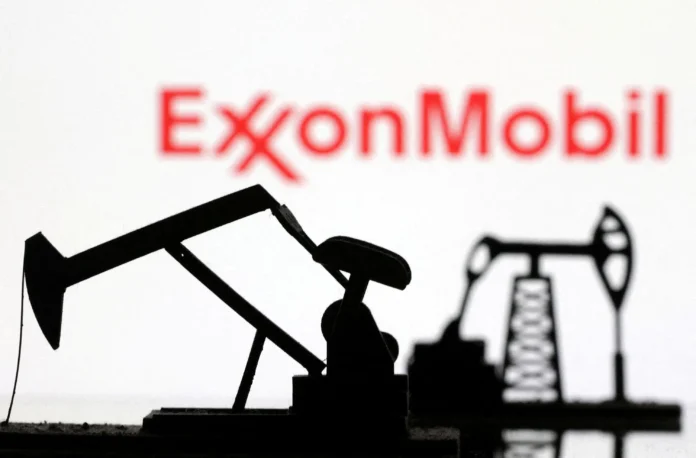This Content Is Only For Paid Member
Exxon Mobil Corp reported a third-quarter profit of $9.1 billion, signifying a 54% decrease from the record earnings of the previous year but marking a 15% increase from the preceding quarter, driven by the recovery in oil prices.
The largest U.S. oil producer experienced a boost in earnings due to improved crude oil prices compared to the prior quarter and a growing demand for gasoline and diesel. Although Wall Street had adjusted its third-quarter expectations lower earlier this month following the company’s announcement of weaker chemical profits and refining margins.
Exxon’s strong performance has led to two all-stock agreements: one with shale competitor Pioneer Natural Resources and the other with carbon pipeline operator Denbury. These agreements were made as Exxon’s shares traded near an all-time high.

In the third quarter, the profit per share was $2.25, contrasting with $4.68 during the same quarter the previous year when oil and gas prices surged in the wake of Russia’s invasion of Ukraine.
The third quarter’s results were positively influenced by global oil prices, which averaged $85.92 per barrel during the quarter, up from $77.73 in the second quarter, according to data from LSEG. However, earnings were partially dampened by Exxon’s chemical business, which was impacted by higher raw material costs. Earnings from Chemical Products during the third quarter amounted to $249 million, down from $828 million in the second quarter.
Exxon’s cash reserves continued to grow, increasing by 10% compared to the second quarter, reaching a total of $33 billion. Chief Financial Officer Kathryn Mikells expressed confidence in the company’s cash balance and its ability to provide flexibility during shifts in the commodity cycle.
The company is maintaining its production target of 3.7 million barrels of oil equivalent per day (boepd) for 2023 and is on track to execute $17.5 billion in share buybacks this year.
In the third quarter, Exxon achieved its year-end cost savings target of $9 billion compared to 2019, which was previously set to be reached by the end of the year. Additionally, the company placed its full-year capital expenditures at the upper end of the guidance range, between $23 billion and $25 billion.
Exxon has been actively divesting assets globally while focusing on more lucrative projects in U.S. shale, South America’s Guyana, and recently listing its Italian refinery for sale.
In the third quarter, Exxon finalized the sale of a refinery in Thailand, generating proceeds of $900 million, which brought the total asset sales for the year to $3.1 billion. Mikells does not anticipate a surge in asset sales following the Pioneer acquisition.
Upon the completion of the acquisition in the first half of the next year, the U.S. company is set to more than double its Permian production to 1.3 million boepd.
Higher production from Guyana and the Permian has helped offset lower crude and natural gas prices and divestments compared to the previous year. Earnings, excluding identified items, declined by $13.3 billion year-to-date, totaling $17.2 billion.




